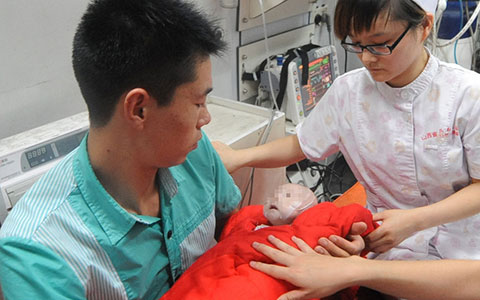National Human Rights Action Plan of China (2012-2015)
(Xinhua) Updated: 2012-06-11 16:20I. Economic, Social and Cultural Rights
The Chinese government will continue to give priority to the protection of the people's rights to subsistence and development. It will take proactive measures to ensure and improve the people's livelihood, spare no efforts to solve the problems of immediate concern to the people, and improve the level of protection of economic, social and cultural rights, so as to ensure that the benefits of development are shared by all members of society.
(1) Right to work
Efforts will be made to implement a more active employment policy, improve the wage system, fully carry out the labor contract system, improve working conditions, strengthen labor safety and protect the people's right to work.
- Implementing the "employment priority" strategy. From 2012 to 2015, the urban workforce will be increased by nine million on annual average, and the registered urban unemployment rate will be kept under 5%. Efforts will be made to ensure equal employment opportunities for urban and rural residents, and promote the orderly outflow of rural labor force and local transfer and employment of rural labor force.
- Improving the wage system. A normal wage increase mechanism will be set up and the minimum wage level will be raised steadily. The minimum wage will increase by over 13% annually, and the minimum wage level in most regions will reach over 40% of the average wage of local urban employees. Efforts will be made to establish and improve the collective wage consultation mechanism and wage payment security mechanism in enterprises, and to ensure that migrant workers and urban employees receive equal pay for equal work.
- Amending the Labor Contract Law and comprehensively introducing the labor contract system. By 2015, the labor contract signing rate of enterprises will reach 90%.
- Improving working conditions. Efforts will be made to accelerate the construction of the system of labor standards, define management according to standard labor quotas and implement the paid vacation system.
- Implementing a safety production strategy, strengthening monitoring for workplace safety and preventing major accidents. By 2015, the completion rate of construction of enterprise emergency platforms at national, provincial (autonomous regions and municipalities directly under the central government) and city levels and for enterprises of high-risk industries will be 100%; and that in the major counties, 80%. By 2013, Grade III safety standards or above will be applied for non-coal mines and factories producing dangerous chemicals and fireworks as well as enterprises above a certain scale in the eight industrial and commercial trades of metallurgy, non-ferrous metals, building materials, machine-building, light industry, textiles, tobacco and commerce. By 2015, enterprises below a certain scale in the eight trades, including the metallurgical industry, as well as transportation and communications, construction and other industries, will reach the required safety standards. The death toll caused by various types of industrial accidents and the number of major accidents will fall markedly. Safety production information will be publicized, and complaints mailboxes and "12350" safe production report hotlines set up and standardized.
- Implementing the Law on the Prevention and Control of Occupational Diseases. The occupational health indicators prescribed in the National Occupational Disease Control Program (2009-2015) will be continuously implemented.
- Launching multiform vocational training to rural and urban workers. Efforts will be made to guarantee every new employee access to corresponding vocational training opportunities, ensuring that technical workers can take part in at least one skill-upgrading training program. The localities are encouraged to establish practical training bases. By 2015, the total number of skilled workers will reach 125 million, of which 34 million will be highly-skilled workers.
- Improving the labor security supervision and law-enforcing system and the labor dispute settlement mechanism. China will strengthen supervision over and law-enforcement for labor security. It will give full play to the role of labor dispute mediation and arbitration, and the closing rate of labor dispute arbitration will reach 90%.
- Man deported to China in test-taking scandal
- 155 Chinese workers pardoned
- Govt, business propose quantum leap
- Ex-environmental official held in probe
- 'Truth' sought after claims made against Shaolin abbot
- 38.7b yuan in State assets recovered in campaign
- China's future megalopolis gathers momentum as young people return
- Eyes focus on the games as showgirls cover up
- Demand for English-speaking staff soar at workplaces
- Chinese like shopping on US websites







